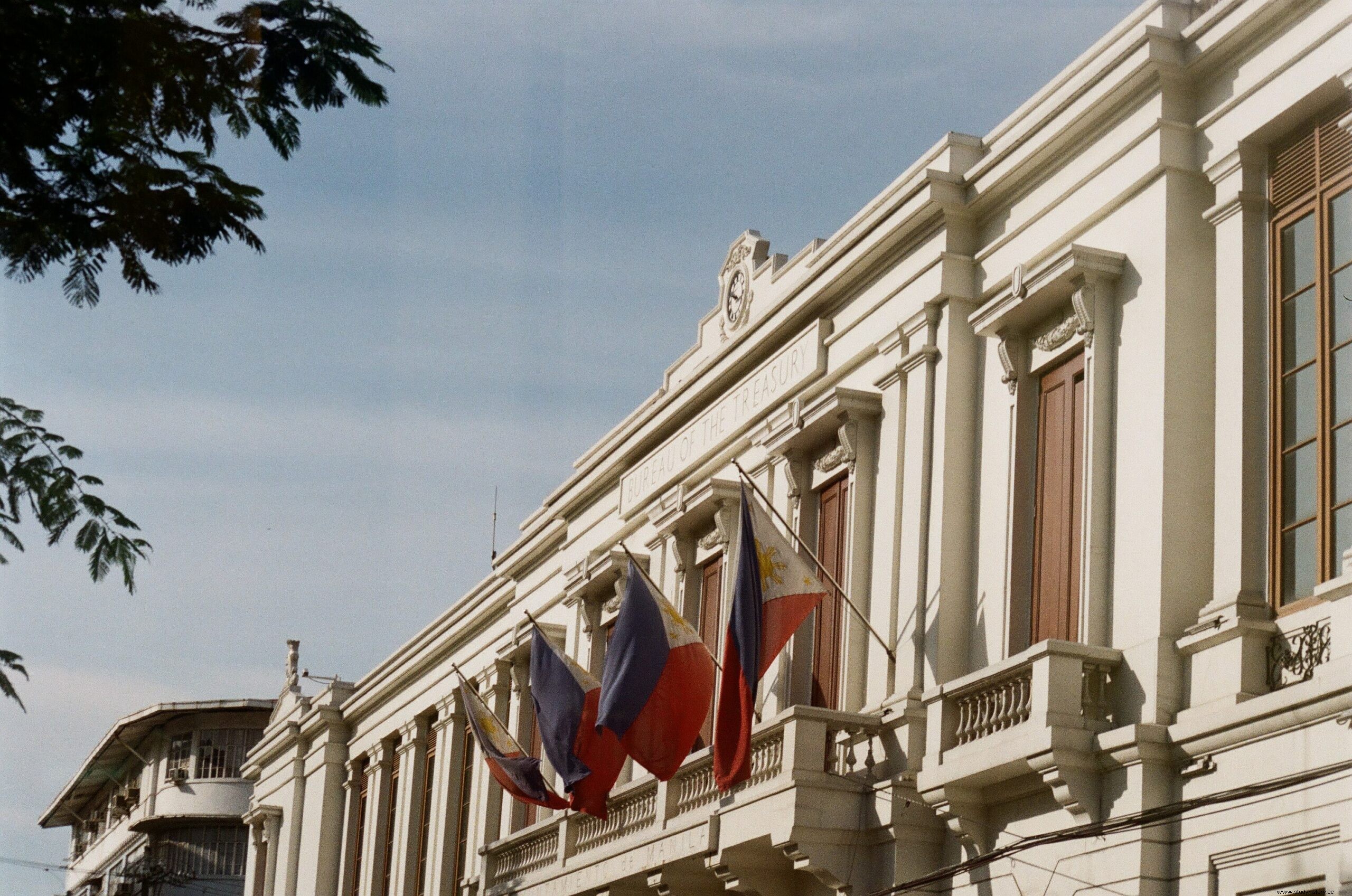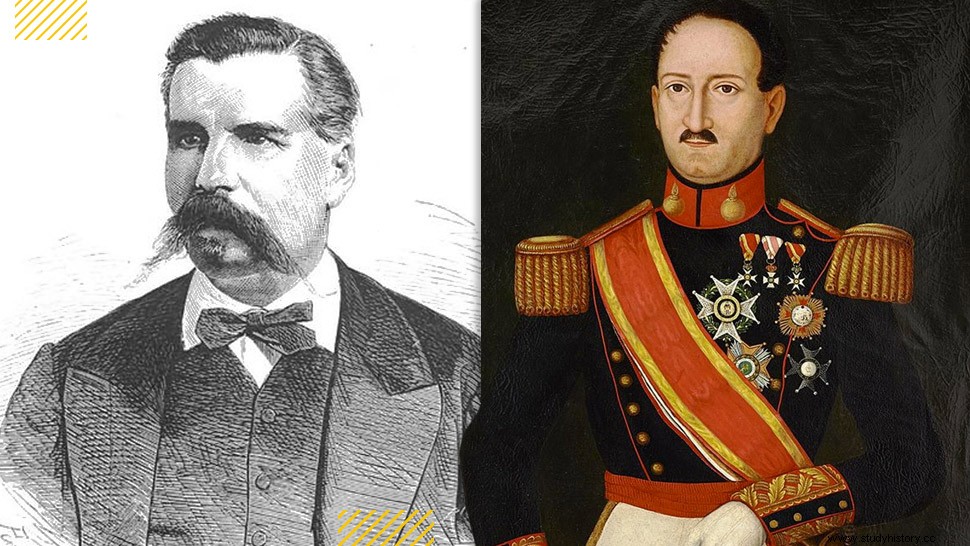
Have you ever wondered how some countries evolved, how they lived, how they changed, or even what made them change? This is the story of how the development of the Philippines was created and how the change affected all aspects of the original culture from faith, language and social economy to something new that still retains the original aspects.
Spain's journey to the east

With the development of the Philippines, it is important to understand the history of how the country has developed and how the invasions that the Philippines has experienced have shaped what it is today. That said, one of the most significant countries that strongly influenced the Philippines would be Spain. Historically, the Spaniards have conquered many lands over an enormous amount of time and during the conquest of increasing cultural power and dominance while spreading their general culture and beliefs. For the Spaniards, they have had several different conquests that have rendered Europe during the period of expansion, but with that they have also conquered outside the world of Europe, which included traveling east to trade in the spice business during that time.
The Spanish colonial motives for traveling east toward the Philippines were strictly based on commercial ideals. The Philippines was just a springboard for the wealth in the east of India, which was known for its spice islands. After the Portuguese and the Dutch ruled out this possibility, the Spaniards still retained a presence in the archipelago (Cullinane). The Portuguese navigator and explorer Ferdinand Magellan led the first attack on the Philippines when he landed on Cebu in March 1521, which he soon met after his untimely death on the nearby islands of Mactan. After King Philip II, who was the person they named the Philippines after, sent three more expeditions that ended in disaster, he met Miguel Lopez de Legazpi, who established the first permanent Spanish settlement, in Cebu, in 1565 (Cullinane). The Spanish city of Manila was founded in 1751, and by the end of the 16th century, most of the coastal and lowland areas from Luzon to northern Mindanao were under Spanish influence. Friars marched with soldiers and soon achieved the nominal conversion to Roman Catholicism of all the locals under the Spanish administration. But the Muslims of Mindanao and Sulu, as the Spaniards called Moros, were never completely subdued by Spain.
The Spaniards ruled for 100 years and were then trained in most areas through a type of tax farming imported from America and known as encomienda. But the insulting treatment of local tribute payers and the neglect of religious instructions from encomenderos (collectors of tribute stones), as well as frequent withholding of proceeds from the crown, had led the Spaniards to leave the overall system by the 17th century (Cullinane). This led to the Governor - General appointing himself to the post of King and beginning to appoint his own civilian and military government to govern directly. Manila mainly dominated the islands not only as a political capital, but the galleon traded with Acapulco mex, this ensured Manila's commercial precedence. The exchange of Chinese goods with Mexican silver not only kept the Spaniards in touch with the Philippines, but also began to attract Chinese society (Cullinane). During this era, the economic and political institutions were also changed under Spanish influence, but also affected the religious area a little. The priests tried to move all the people to pueblos which are small towns or villages that surround a large stone church. But with such a widespread demographic pattern of the ancient Barangays was a factor that always influenced the overall plans of the church that were considered troublesome. Nevertheless, the date ended once hereditary position subject to the Spanish appointment. (Cullinane)
Anthropology:Socio-economic changes that changed cultural status

The socio-economic consequences of Spanish policy, this shift intensified the class differences. Datus and other representatives of the ancient noble classes took advantage of the introduction of the Western notions of absolute ownership of land and began to claim their own fields that cultivated the ideals of traditional land rights that had been limited to infrastructure (Weedon, 2019). These mounds of pre-Spanish nobility were known as principalia and played an important role in the oral-dominated local government of the Philippines and influenced and led to the Philippines current state of socioeconomic perceptions and ideals (Weedon, 2019). Spain's overriding goal of conquering the Philippines and asserting its political policy towards the people was that they discarded, formed a colony in Asia:to gain a share in the spice trade, to develop and establish a relationship with both China and Japan to promote their Christian missionary efforts to convert Filipinos to Christianity, which would convert their original pagan beliefs into thinking of the overarching concept of the existence of God and the devil, the concepts of both heaven and hell and with that they had to be able to convert a majority of the population's beliefs which is presented in the general current state of the Philippines today. Furthermore, the Spaniards also had a third goal that was eventually realized later, which was to adapt the rest of the country's people to Christianity, from the remaining 10% of Muslims in the south and Igorot in the indigenous people in the north (Weedon, 2019). From King Philip II's perspective, he ordered that the pacification of the Philippines be bloodless, in order to avoid a recurrence of Spain's sanguine conquests in America. Fortunately, this led to relatively little or no bloodshed, in part because of how most of the population except Muslims offered little armed resistance in the beginning.
Economic changes in the Philippines

Fast forward to the end of the 18th century, political and economic changes in Europe finally began to affect Spain and thus the Philippines. This started an important stimulus for trade which gradually led to the elimination of the monopoly that was previously established, and which the gallon benefited from to Acapulco. The last Galleon arrived in Manila in 1815, and by the mid-1830s, Manila was open to foreign markets with almost no restrictions. Demand for Philippine sugar and abaca (hemp) grew, and the volume of exports to Europe expanded further after the completion of the Suez Canal in 1869. At that time, the growth of commercial agriculture resulted in a new class system (Hawkley, 2014). In addition to the land holdings of the church and the rice estates of the Spanish nobility, there were haciendas of coffee, hemp and sugar, often these were the characteristics of enterprising Chinese-Filipino mestizos. Some of the elite families became prominent in the 19th century and have made contributions that have played an important role in the Philippines' overall economic and political areas (Hawkley, 2014). Back in the story of Spain's conquest in August 1896, the Spanish monks uncovered evidence of the Katipuanan's plans and forced its leaders to act prematurely in a war that was truly unexpected. The uprising broke out in several provinces around Manila, and after months of continuous fighting, it caused severe damage to the Spanish armies that forced them to retaliate against the hills. Then in December 1897 a truce was formed with the Spaniards. Emilio Aguinaldo, a municipal mayor and commander of the rebel forces, was paid a large sum and was allowed to go to Hong Kong. collided and grew more often (Hawkley, 2014). Meanwhile, war broke out between Spain and the United States, which became known as the Spanish-American War. After the United States, naval victory in the Battle of Manila Bay in May 1898, Aguinaldo and his team returned to the Philippines with the help of the American Adm Goerge Dewey. Trusting American support, Aguinaldo reorganized his forces and soon liberated more towns and villages in southern Manila. Shortly afterwards, the country of the Philippines declared its independence from Spain on 12 June. In September, a constitutional congress met in Malolos, north of Manila, which drafted a constitution based on European and Latin American precedents. Then a constitution was formed in January 1899, with Aguinaldo as president of the country. (Hawkley, 2014)
Philippines's current state

The effects of the Spanish conquest left a huge impact that can be seen in the current state of the Philippines. From the end of the 16th century until 1898, Spain controlled the archipelago and introduced violent Catholicism and Latin American culture in the south of the Southeast Asian nation. But in 1987, Spanish in the Philippines was removed as a co-official language, along with English and Filipino is also known as Tagalog. At our current age, about 0.5% of the Philippines has a population of 100 million people who speak Spanish; However, it is still home to most Spanish speakers in Asia. For linguistic roots, the Spanish roots have not completely left Filipino culture as the third of the Filipino language is derived from Spanish words as the Philippines has a constituent loanword of 4,000 words (Balinski, Spanish influence in the Philippines). This then affected the education system in the Philippines due to how the Spaniards under the Spanish government established Catholic schools. At these institutions, monks and nuns were the teachers at these schools. The Filipino people were knowledgeable before the Spaniards ever came, but the Spaniards added new subjects to the education system such as math, Spanish and business. During this time, the Spaniards also established colleges that were divided into two divisions based on gender. One of the more famous colleges that exists today is called Santo Tomas, which was established in 1611. (Balinski, Spanish influence in the Philippines )
Not only has the Spanish conquest influenced the overarching ideals of the education system in the Philippines, but it has also affected the people, not only historically, but to this day, many Filipinos of Spanish descent are rooted in our surnames. The reason is that in 1849 the governor issued an order for all families to choose a new surname from a list of Spanish surnames (to create a more organized system of keeping track of people). As a result, today many Spanish surnames are still in use, such as Garcia, David, Cruz, Reyes, Mora, Vasquez, etc. This overarching system left us Filipinos to leave our original names to formulate a system of conscience to keep in check the total population of the Philippines. (Balinski, Spanish influence in the Philippines) However, there were some Filipinos who did not want to change their surname and keep their original name, so there are still some remaining surnames such as Matapang, Masipag, Guinto, etc. from the few others who kept the surname, influenced the Spaniards also the country's overriding religion. Again as mentioned before the country in the Philippines had mainly pagan ideologies which were then exterminated through the conversion of the people to Christianity and Catholicism, which became most of the Filipinos who were either Catholics or Christians. Something that made the Philippines the fifth largest country with a strong belief in religion with it said that it was also something that largely illustrates the general archery power of the Catholic Church that gives people in the Philippines today their strong sense of culture. Finally, the Spanish conquest also affected the general system's economic system which affected its wealth and economy due to the way the Spanish money system based on the Pesos system was adopted in Philippine culture and in addition to the use of Spanish figures in business and money transactions. , and today these numbers still exist in the market system today. (Balinski, Spanish influence in the Philippines )
